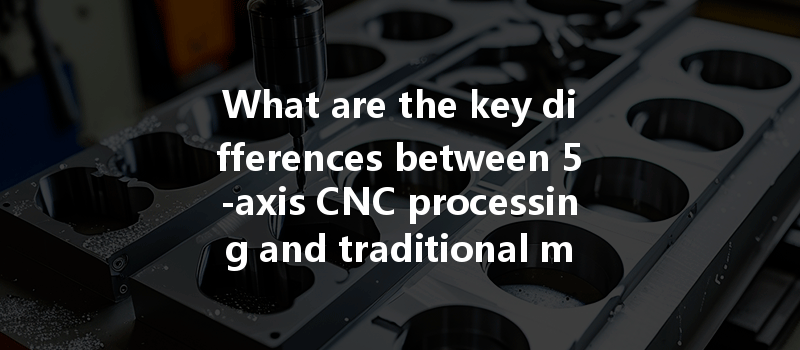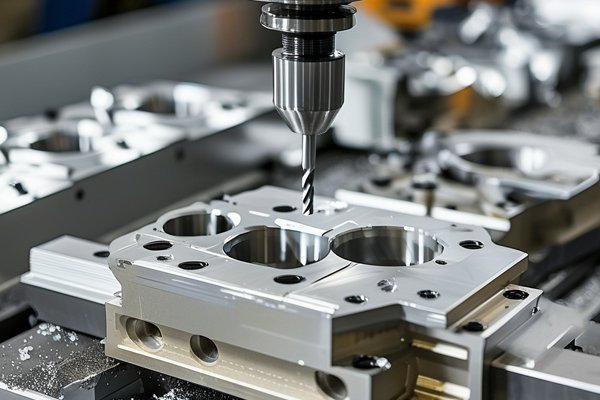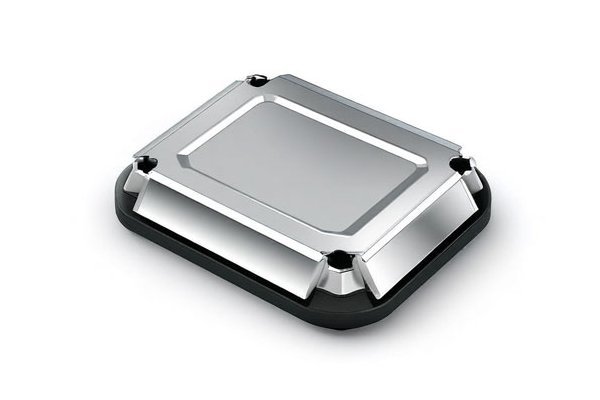Have you ever wondered how complex and intricate components used in industries like aerospace or healthcare are manufactured? The answer lies in advanced machining technologies like 5-axis CNC processing. In fact, a staggering 98% of precision components in high-tech industries are produced using CNC (Computer Numerical Control) technology. In this blog, we will delve into the fascinating world of CNC machining, specifically focusing on the differences between traditional machining methods and 5-axis CNC processing.
to CNC Machining
CNC machining is a technique that uses computerized controls to operate and manipulate machinery. Typically, CNC machines work with subtractive manufacturing, where material is removed from a solid block to create desired shapes and features. Traditional machining methods, on the other hand, often rely heavily on manual input and can introduce human error, thereby compromising precision and efficiency.
Why Is 5-Axis CNC Processing Important?
As industries evolve and the demand for higher precision and complexity grows, manufacturers are turning towards advanced machining technologies. 5-axis CNC processing represents the cutting edge in this field, allowing for unprecedented levels of accuracy and complexity. Traditional machining can restrict a machinist’s ability to create intricate shapes, as it typically involves processing parts in a linear fashion—one or perhaps two axes at a time.
In contrast, 5-axis CNC machining permits simultaneous movement across five different axes, transforming the way components can be manufactured. This leads to faster cycle times, improved surface finishes, and the ability to create parts with complex geometries in a single setup. So, what exactly are the key differences between 5-axis CNC machining and traditional methods? Let’s explore.
Key Differences Between 5-Axis CNC Processing and Traditional Machining
Traditional Machining:
Most traditional CNC machines have only three movement capabilities (X, Y, and Z axes). This limits the type of shapes and complexities that can be achieved, leading to the need for multiple setups and tool changes.
5-Axis CNC Processing:
By incorporating two additional rotational axes, 5-axis machines can tilt and rotate the workpiece or the cutting tool in multiple directions. This allows for intricate geometries and undercuts that are nearly impossible to achieve with standard milling techniques. It offers greater flexibility in design and allows for creating complex components in a single setup.
Traditional Machining:
Setting up a part on a 3-axis machine can be time-consuming. Oftentimes, multiple setups and fixtures are required to machine different sides of the workpiece, increasing overall machine time and labor.
5-Axis CNC Processing:
With its ability to reach different areas of the workpiece without requiring repositioning, 5-axis machining drastically reduces setup times. This not only improves efficiency but also allows manufacturers to focus on higher-value tasks during the production process.
Traditional Machining:
Human error can influence accuracy, especially when complex parts require manual interventions for setups and alignments. Small misalignments can lead to significant tolerance issues, hence affecting the overall quality of the end product.
5-Axis CNC Processing:
The automated movements of 5-axis machines can make more precise cuts with far less human involvement, vastly improving the consistency of parts. The computations required for simultaneous movements ensure that accuracy and quality are maintained throughout the process.
Traditional Machining:
A machining process using a 3-axis setup may necessitate multiple tools for different angles and orientations, ultimately incurring more costs in tooling and inventory.
5-Axis CNC Processing:
While 5-axis machines also require a variety of tools, they can often employ more versatile tool types that can operate across various angles, minimizing the number of specialized tools needed. This interchangeability leads to cost savings and reduced tool change times.
Traditional Machining:
With the necessity of multiple setups and possible repositioning, material waste can accumulate, especially if the initial cuts do not yield the desired dimensions.
5-Axis CNC Processing:
As 5-axis machines can achieve complex features with fewer setups, they are often more material-efficient, resulting in lower waste and, therefore, reduced costs and environmental impact.
Traditional Machining:
Surface finish quality will typically depend on the ability of skilled machinists and the limitation of tool access. As a result, the finish of a part could vary greatly and may require additional processes like polishing.
5-Axis CNC Processing:

The advanced capabilities of the 5-axis system lead to superior surface finishes with minimal additional processing. The tool path optimization and smaller cutting tool diameters ensure smoother finishes on intricate features.
Traditional Machining:
Difficult and complex geometries often necessitate several machines and setups, leading to extended production times and increased costs.
5-Axis CNC Processing:
Such complexity is one of the greatest advantages offered by 5-axis machining. The design freedom and flexibility facilitate the production of parts that traditional methods would struggle to achieve, opening new avenues for designers and engineers.
Applications of 5-Axis CNC Machining
The unique benefits of 5-axis CNC processing lend themselves to a variety of industries and applications, including:
Precision components such as turbine blades or complex brackets can be machined more efficiently and accurately, optimizing weight and performance.
From engine components to exterior finishes, the need for precision and aesthetic quality is met through the complexity afforded by 5-axis technology.
Intricate components that require extreme hygiene and sterility, such as surgical instruments, benefit from the precision of 5-axis machining.
Complex molds can be created more efficiently, with better surface finishes that result in quality end products.
Components of smartphones and other devices often fit within tight dimensional tolerances, making 5-axis machining advantageous in this space.
Implementation of 5-Axis CNC Processing
Investing in 5-Axis Technology
If you’re considering a move to 5-axis CNC processing, you will have to weigh the costs and benefits of implementing this advanced technology in your production. Key factors to consider include:
Process Optimization
After investing in 5-axis machines, it’s important to ensure that the processes are optimized for performance:
In conclusion, the expansion of CNC technology has significantly influenced the realm of precision machining. The shift from traditional machining methods to 5-axis CNC processing has transformed manufacturing practices, leading to improved efficiency, precise tolerances, and opportunities for innovation in design and production.
As we’ve outlined, the advantages of 5-axis over traditional techniques are considerable—from enhanced geometrical capabilities to reduced waste and improved surface finishes. For businesses eager to stay competitive in an ever-evolving landscape, embracing 5-axis machining will not only streamline operations but also unlock new possibilities for product development.
Understanding the differences between these methods is vital in making informed decisions that can transform your production capabilities. Take the time to consider how 5-axis CNC processing can benefit your operations while ensuring your business stays ahead in innovation and manufacturing practices.
By continually investing in and evolving these techniques, we can not only meet today’s demands but also anticipate and prepare for the challenges and opportunities of tomorrow.






